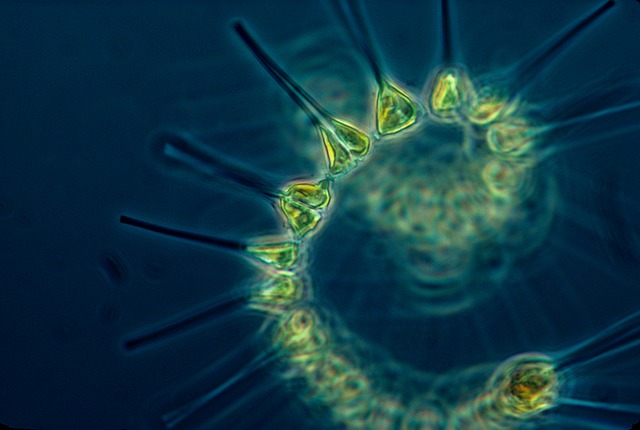 Until now, sea ice was thought to limit sunlight and prevent the growth of microscopic marine plants under the ice shelves.
Until now, sea ice was thought to limit sunlight and prevent the growth of microscopic marine plants under the ice shelves.
But in the summer of 2011, a team of oceanographers and biologists exploring the Arctic ice for effects of climate change ran into quite a surprise.
Under the ice were huge fields of phytoplankton blooms extending for nearly 62 miles (100 kilometers). What's more, the amount of phytoplankton was four times greater than that found in nearby ice-free waters.
Just as a rainstorm in a desert would give rise to an outcrop of wildflowers, so also a combination of thinning ice and sunlight had created a phytoplankton forest!
What Are Phytoplanktons?
After the initial surprise, scientists set out to measure the thickness of ice and capture images of the bloom with a special camera.
So, what exactly are phytoplankton blooms? Phytoplankton are microscopic plants that live in the ocean and use sunlight for photosynthesis. These small plants are very important to the ocean and to the whole planet. They are at the bottom of the food chain and eaten by small animals, which in turn are eaten by large animals -- and so on until people consume fish and it enters our bodies!
Billions of photosynthesizing plankton functioned as the builders of our Earth’s atmosphere by releasing oxygen and provided energy to early life forms.
The Discovery

Since phytoplanktons need sunlight, they live beneath the surface of the water. However, too much sunlight -- as is found in the open seas, is not good for its growth either. The melting pools of water on top of the ice shelves act like a 'skylight' to create just the right amount of sunlight tunneling into the deep waters.
But wait, there is one more factor. The Arctic water currents under the ice shelves drive cold, nutrient-rich water up from the abyss, which nourishes the phytoplankton, creating ideal conditions for its growth. The images also showed some phytoplankton in the bloom in a half-munched state -- this meant planktonic grazers must be eating them. There was a whole new ecosystem developing under the ice shelves!
Is This Good Or Bad?
Phytoplankton, which are basically plants, take in atmospheric carbon dioxide -- a major greenhouse gas. So, is this good news for global warming? It is too early to say, according to scientists on what the long-term impact might be, as they are just getting their arms around this astonishing discovery.
The increasing Arctic ice melt will cause more phytoplankton to bloom earlier and earlier. This could be bad news for the many migratory birds and whales that travel to plankton-rich waters at specific times every summer for feeding.







